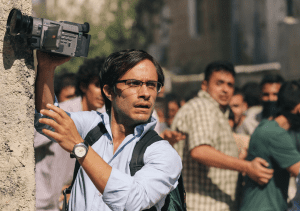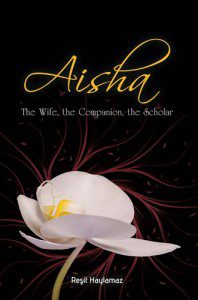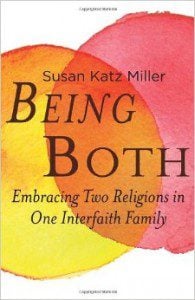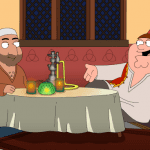 |
|
The ‘abusive critic’
|
On November 2, 2004, an ominously murky morning in Amsterdam, a small wiry man wearing a Moroccan djellaba and sneakers rode his bicycle, that ubiquitous symbol of Dutchness, to a building he knew well. Seeing his intended target, a short blonde man dressed in a T-shirt and suspenders, he pulled out his gun and shot the man squarely in the stomach. Pulling out a pencil, he then penned a short note and stuck it to the man’s chest with a machete. Thus, in this unceremonious and grisly encounter on the streets of Old Amsterdam, the two faces of Europe collided.
The murder of Theo Van Gogh at the hands of Mohammad Bouyeri has since become a regular remonstrance in the dialectic that pits radical Islam against defenders of the Enlightenment. The most commendable facet of Ian Buruma’s book on Theo Van Gogh’s murder is its reluctance to lapse into the eulogic veneration characteristic of most writing borne out of this seductively polemical conflict.
Buruma, much to the chagrin of his critics who have committed themselves to one side or the other of the battle, resists the temptation to create the venerable heroes and salacious villains we have come to expect in all such tales. The characters are presented not simply as icons pitched in a larger conflict, their motives pristine in their ideological purity, but rather as symbols of a deeper, more complicated affliction in which neither side can be squarely edified or castigated. Indeed, Buruma’s expedition into the morally amorphous world of Dutch politics is fascinating precisely because it refuses to succumb to this very enticing proposition of parsing the story for moral victors and presenting neat and ultimately reductionist solutions to what is repeatedly theorised as a civilisational conundrum.
At the centre of this lurid tale played out on the narrow streets of Amsterdam lies Van Gogh’s film Submission written by Ayan Hirsi Ali, the Dutch politician who has since been made to leave Holland for lying on her immigration application. The 10-minute film was shown on Dutch television and depicts verses of the Koran projected on the bodies of naked women. The chosen verses speak of the submission of women to their fathers, husbands and brothers and to Allah. Amid the garishly sensationalised sounds of lashing whips, Koranic verses prescribing the punishment for fornicators and adulterers are read by a quivering female voice as images of women in positions of prayer flit across the screen. In Ayan Hirsi Ali’s perspective, the film is the celluloid incantation of a deeply rooted civilisational dilemma, a strategic provocation meant to shock Muslims into thinking about their faith in a way that mimics the Enlightenment’s disdain for the sacred.
As is revealed in Buruma’s conversations with the Somali-born Hirsi Ali, the deliberately sacrilegious juxtaposition of Koranic text and the female body is for her the revolutionary break from the most stifling constraint facing Muslims: the unquestioned divinity of the Koran and the submission to Allah’s will. Interestingly, for all her aspirations towards idolising Voltaire at the expense of Islam, Buruma also tells us that most of Hirsi Ali’s iconoclastic derision is shown on media viewed by the Dutch intellectual elite rather than the immigrant-dominated and poverty-stricken “dish cities” surrounding Amsterdam. Buruma refrains from judging Hirsi Ali’s film as either heroic or tastelessly provocative; he does tell us, however, that Hirsi Ali can no longer venture into any Dutch Muslim neighbourhood without a bevy of bodyguards.
Violating the sacred was alluring for Van Gogh for rather different reasons. As Buruma tells his readers, Van Gogh’s childhood and adulthood were marked by the lethargic post-Enlightenment vacuum in which nothing is sacred and there is pathetically little to fight for. Born into this stolid apathy and predictably conjuring his own rebellion from a life of entitlement, Van Gogh positioned himself amid “the abusive critics” of Dutch literary tradition whose feats included calling Catholics “the filthiest, creepiest most deluded most treacherous part of our nation”. Finding objects of desecration was thus an essential component of Van Gogh’s public persona, one built on giving a public voice to the virulent fear of Muslims felt by so many Dutch. Van Gogh’s defence of the Enlightenment thus took the dubious form of attacking a source of sanctity that still remained exotically controversial. In attacking this remaining bastion of sanctity, Van Gogh’s politics represented the lurid equivocation of hatred for Muslims with a defence of the Enlightenment.
Mohammad Bouyeri’s crusade of defending Islam by murdering Theo Van Gogh, the blasphemous apostate, is marked by its own pathetic inauthenticity. Bouyeri’s search for the sacred, satisfied by second-hand translations of the Koran, bloodthirsty videos of jehadis and ultimately murder cannot be isolated from the self-annihilating humiliation of living in a culture where he would forever be an “allochtoon” or “foreigner”.
As Buruma aptly points out, Bouyeri’s misgivings fit far more squarely into the qualms of a mistreated underclass forced to live a semi visible existence than into the stalwart defender of Islam driven by ideological fervour that Bouyeri wanted so desperately to become. His killing of the heretical Van Gogh was thus the ultimate act in this all-consuming, self-defining process of becoming authentic, a desperate search of one whose generation is “neither Dutch nor Moroccan” but for whom “Islam remains”.
Indeed, not one of the three dominant figures whose characters loom large in the book emerge as the selflessly guided champions of either liberty or faith. Theo Van Gogh, Mohammad Bouyeri and Ayan Hirsi Ali are all presented as complex characters whose intentions cannot be distilled solely to ideological commitments of any sort. Buruma’s sparse prose is successfully empty of both cynicism and idealism and thus refreshingly expository in presenting characters that represent a perversion both of Islam and the Enlightenment.
Van Gogh’s gruesome and unquestionably undeserved end is presented in all its lurid and bone-chilling detail but so is his repulsive quest for attention and penchant for desecration. Similarly, Ayan Hirsi Ali’s deliberate provocations in Submission are portrayed not simply in their adherence to the questioning spirit of the Enlightenment but also in their pathetic inability to actually instigate ideological questioning in the target Muslim audience they are supposedly designed to inspire. Buruma sensitively suggests that the content of the film as well as the venue for its ultimate screening are designed perhaps to garner Hirsi Ali a place among the Dutch intellectual elite under the seemingly worthy but possibly pretextual cause of initiating a revolutionary rethinking of Islamic doctrine. Bouyeri himself appears in Buruma’s book as a nobody trying desperately through his act of murder to achieve a sense of belonging and finding respite only in fundamentalist Islam. In his macabre recreation of the murder scene, Buruma illustrates the tragedy of Bouyeri’s vengeful attempt to transcend the unmoored destiny imposed on him by a Dutch society that can either hate him or deny his existence.
Moral ambiguity
The motivations and ultimately the actions of the trio are invested with an even more troublesome flavour of moral ambiguity when the reader realises how much more complicated the questions of moral judgment become when faced with these nuances. While it is doubtless true that Bouyeri can be unquestionably condemned for his cold, calculating murder of Theo Van Gogh, does this condemnation excuse Dutch society from the xenophobia that celebrates Islamophobic politicians as national heroes?
Similarly, does Hirsi Ali’s call for Dutch Muslims to foster a Muslim Enlightenment by challenging the sanctity invested in religious texts mark little more than childish mimicry of a bygone revolution that does not directly speak to their reality as a racial and religious underclass? Do Internet downloads espousing the brutal killing of apostates and heretics really make wayward immigrant youths into ideologues worthy of being characterised as civilisational warriors for an entire faith? These questions, posed by Buruma without pretence or prescription, collectively present the dilemmas facing the Dutch in particular and Europe in general.
Lurking in the shadows of Theo Van Gogh’s murder is the killing of Pim Fortuyn, an openly gay Dutch politician who was also murdered in Amsterdam, at the hands of an animal rights activist. In detailing the connections between the legendary Pim Fortuyn, who was voted the most influential figure in Dutch history, and Theo Van Gogh, Buruma captures an emergent brand of Dutch politics that is based not on any coherent ideology but on vulgar theatrics and the adoption of hatred of Muslims as a basis for political organisation. Both Pim Fortuyn and Theo Van Gogh gave political voice to the Dutch fear of Muslims, legitimising it through the ideology of the Enlightenment. Buruma’s parallelisation of the careers of both Fortuyn and Van Gogh and their capitalisation on Islamophobia begs the question of how the Enlightenment virtues of freedom and reason could have been politically perverted to justify hatred for a racial underclass. This crucial question, posed repeatedly, if not directly, by Buruma through his coinage of the term “Enlightenment fundamentalist” represents the most intellectually fascinating aspect of the book.
While it is undoubtedly true that Muslims like Bouyeri with their fundamentalist, misogynistic and murderous interpretation of religious text surely represent a threat to the Enlightenment virtues of freedom and reason, do public personas like Theo Van Gogh indeed represent a personification of those same Enlightenment virtues. This persistent refrain that echoes through the book forces the reader to question the illiberal and often intolerant practices of the Dutch Muslims amid whom Bouyeri was reared as well as the Dutch who have managed to delude themselves into believing that hatred is somehow an Enlightenment virtue.
One conclusion that emerges from Buruma’s presentation of Theo Van Gogh’s murder is the pessimistic proclamation that the values of the Enlightenment have become so politically tainted with the grotesque associations of imperialism and racism that they can no longer be ideologically expedient in promoting any sort of revolutionary changes. If history and political context no longer influenced the reception of ideas, and if the Enlightenment like Islam had not fallen prey to contemporary political perversions, it would indeed make philosophical and ideological sense to present it as the golden solution to the Dutch dilemma.
In reality however, the ramparts of political polarisation in the Netherlands have been drawn in such a way that even the most oppressive tactics against Muslim women, ones Hirsi Ali rightfully denounces, have become reinterpreted as marks of resistance that must be held onto as a sign of loyalty to faith and culture. When the same voices that enunciate racial taunts reinvent themselves as bearers of the virtues of the Enlightenment, it comes as a scant surprise that the Enlightenment itself is rejected as yet another imperialist tool of subjugation.
As more and more Dutch Muslim women retreat behind claustrophobic black veils and men like Van Gogh are brutally gunned down in the name of misguided faith, the question Europe must confront is the reality of a marred, disfigured Enlightenment denuded of its emancipatory potential by the tainted hands of those who deliver it.
Rafia Zakaria is an attorney and member of the Asian American Network Against Abuse of Women. She teaches courses on constitutional law and political philosophy.











